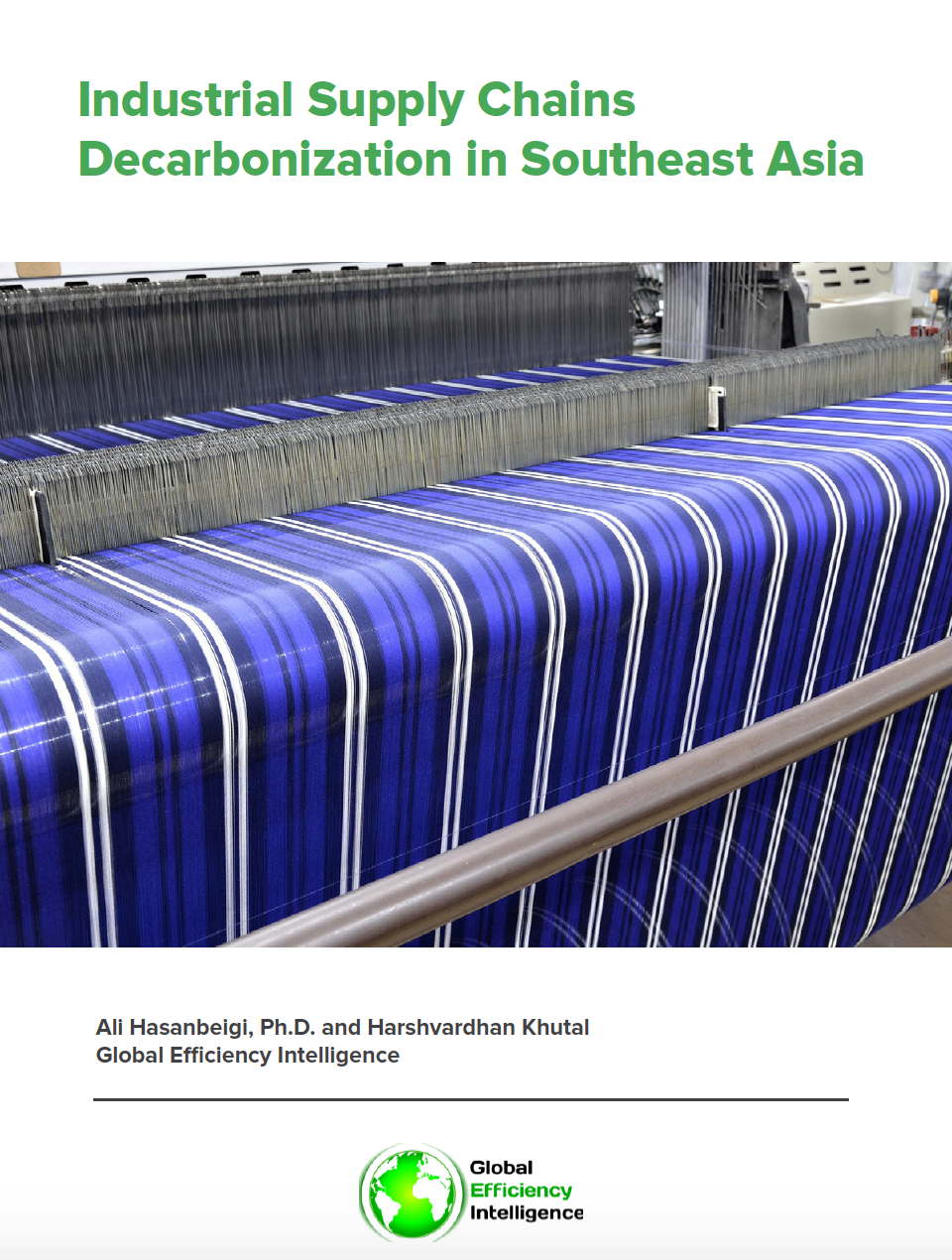Industrial Supply Chains Decarbonization in Southeast Asia
Authors: Ali Hasanbeigi, Harsh Khutal
Industry sector is the largest contributor of greenhouse gas (GHG) emissions globally. In Southeast Asia industry is also one of the top emitters of GHG emissions. With significant economic and industrial output growth projected for countries in Southeast Asia in the next few decades, the energy use and GHG emissions related to the industry sector is projected to grow substantially in the absence of aggressive GHG abatement policies and strategies by countries in the region.
The private sector has a substantial potential to drive industrial decarbonization actions. For many companies and brands whose supply chain emissions are significantly greater than operational emissions, it is clear that to take meaningful action, companies must leverage their purchasing power, and collaborate with their supply chains. However, according to CDP, with only 29% of suppliers reporting an absolute decrease in 2019 emissions, it is clear purchasers and their suppliers in Southeast Asia and other regions must do much more.
In this report, we first analyze the industrial energy use in five major energy consuming countries in Southeast Asia: Indonesia, Malaysia, Philippines, Thailand, and Vietnam. The following chapters discuss different aspect of improving energy efficiency and reducing GHG emissions in industry in Southeast Asia through supply chain sustainability. We discuss the key barriers to supply chain decarbonization, leading practices for promoting low-carbon industrial supply chains, and the importance of performance measurement systems and their corresponding key performance indicators (KPIs) for promoting supply chain sustainability. The case-studies for supply chain sustainability are focused on the textile and apparel sector as well as electronics product manufacturing sectors. These two sectors have a large supply chain in Southeast Asia.
Based on international best practices identified in this study, companies can take the following actions to lower the carbon footprint of their supply chains:
Develop stronger relationships with their suppliers through supplier engagement programs and help their suppliers establish their own sustainability management systems and policies, which would help suppliers systematically measure and track their GHG emissions.
As part of developing a method for managing supplier data, companies can either create or outsource a data collection system or leverage an existing GHG reporting and disclosure program.
Set GHG reduction and carbon neutrality targets that cover their supply chains.
Translate GHG reduction and carbon neutrality targets further into actionable targets for their individual suppliers.
Encourage and support suppliers to transition to renewable energy which is key to achieving scope 3 GHG reduction targets.
Encourage and support suppliers to identify and implement energy efficiency opportunities and adopt ISO 50001 energy management standard
Set internal carbon pricing. This scheme provides companies an opportunity to assess risks associated with future regulations concerning mandatory carbon prices, and consequently work towards identifying cost saving and revenue prospects of investment in innovative low carbon technologies and decarbonization of operations.
Provide information and educational materials to their suppliers to support their effort and build capacity for energy efficiency improvement and low carbon transitions.
To read the full report and see complete results and analysis of this new study, Download the full report from the link above.
Don't forget to Follow us on LinkedIn , Facebook and Twitter to get the latest about our new blog posts, projects, and publications.

